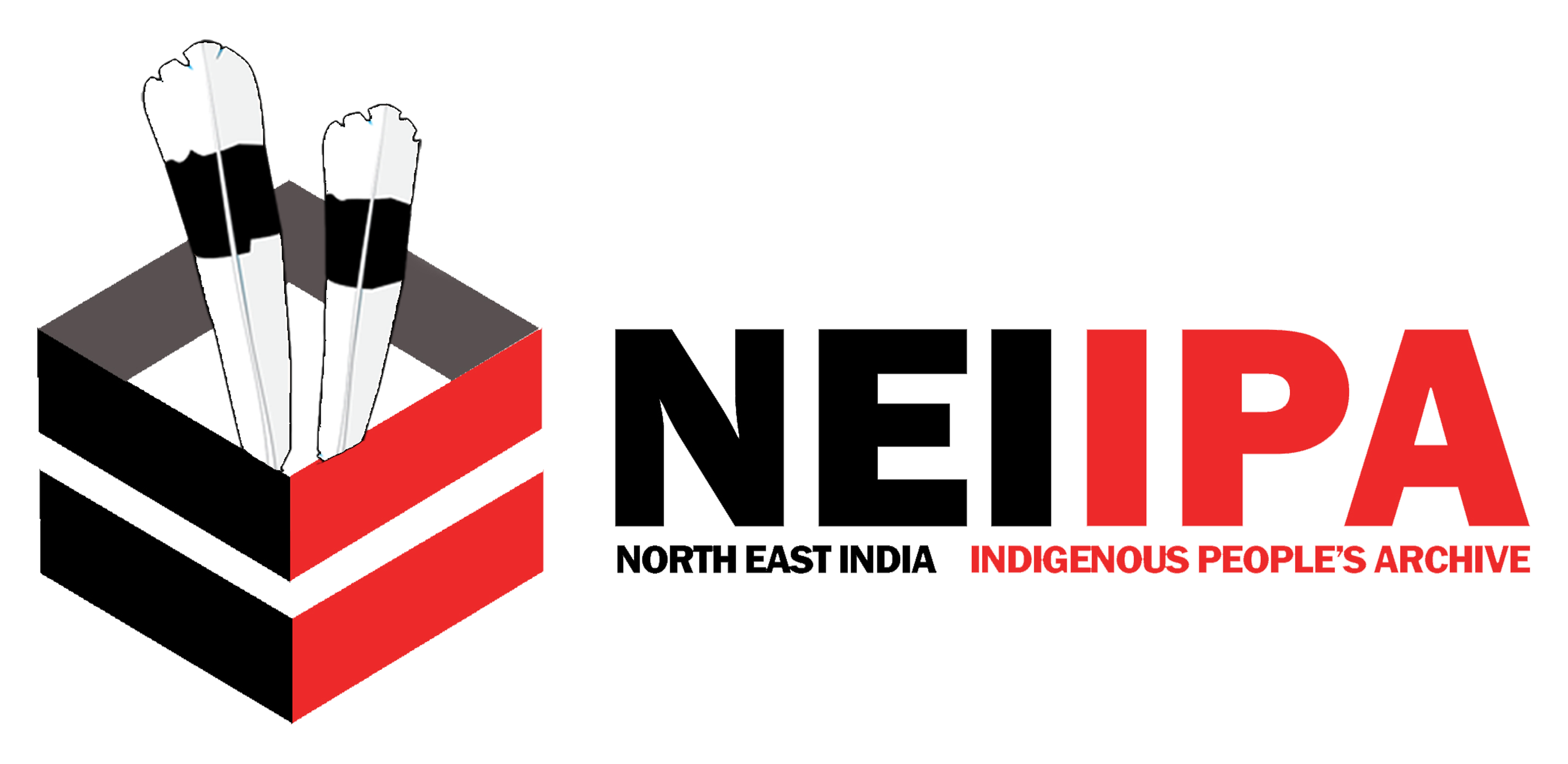THE WORD SANGTAM
During the 1870-1880’s the British survey team led by Woodthrope first entered the Northern Sangtam territory. When the Britishers asked the people about their tribe, they replied that they are the people who migrated from Sangdang (now Satami under Zunheboto District) which was their ancestral village. Thus the word Sangdang was interpreted as Sangtam by the Britishers.
As per the oral history, it may be mentioned that the name Sangdang village was derived from a traditional practice by the people, who use to live in elevated platform house called Sangdang meaning platform. However, the first mention of the word Sangtam appeared in the Assam Administrative Report, 1889 by the British.
A BRIEF HISTORY ON SANGTAM NAGA MIGRATION
As per oral history handed down through generation, Sangtams were also among the first group of people (now Nagas) who were brought from Mongolia to China and deployed in the construction of the Great Wall of China. To differentiate this group from the mainland Chinese, their ears were pierced. But due to hardship faced at the construction site, the group of Nagas left the work site and migrated south towards Burma (Myanmar) and settled at Maikhel. From Maikhel, some of the Nagas migrated and finally settled at present day Khezhakhenoma. From Khezhakhenoma, the Sangtams again migrated to Shukumükoh, Mütsali and again moved to a place called Khuza, but they did not stay long and a splinter group moved up the Kihrü (Tizu) river and settled at a place called Jutruhungnyang. The other group did not cross the river but moved westwards settling in Kilorü, Tukunasa and finally settled at Ningneng(Nunumi) village. Due to certain social disturbances the Sangtams could not continue to settle in this village and further splintered to two groups. One group migrated to the East and finally settled at Yangthrü(Thsinga) and the other group moved northwards and finally settled at Hurong village (now abandoned and located near New Tsadang village).
The tribe consists of 6(six) major Shuh:
- Yingphi Shuh:
The group of Sangtam settled at Jutruhungnyang moved towards East and established Yangphi village. The story says that one day a man prophesied that there will be a volcanic eruption (Alih Tsohnung) in this village, which created a great fear among the people and most of the villagers moved to a nearby place and named it Yingphi. These Yangphi Sangtam group founded many Sangtam villages and the people of these villages are referred as the Yingphi shuh.
- Thsinga Shuh:
One group of Sangtam from Ningneng village migrated towards East and settled along Chinghi ki/Thsinga ki/Tita river. The settlements established during their migration from Ningneng to Yangthrü were Soto (Shotomi), Throngkiwaya (Tokihimi), Juwaya (Lisheki) and finally to Yangthrü.
As Yangthrü was situated in a very shallow (Amikok) area, they moved to a higher area and founded the present Thsinga village. From this village, many more villages were formed and the people who migrated from Thsinga village are called Thsinga shuh.
- Hurong Yanghi/ Old Hurong(abandoned village near Tsadang- upper Sangtam area)/Hurong shuh:
The other group of Sangtams who migrated from Ningneng(Nunumi) village moved towards the noth and established villages such as Singkong (now Sukomi), Rotorü (Rotomi), Litsa (Litsami), Limulok (Emlomi), Sirongrü (Surumi) and finally settled at Hurong village(now abandoned and located near New Tsadang Village). The Hurong Sangtams were known for weaving beautiful aesthetic shields called “Tsong” and they had a good trading relation with the Longsa (Ao) people.
History says that the Hurong Sangtams attacked three Ao villages viz. Longtikimong, Nyijongyang, Nyijongkimong. Ultimately nine Ao villages joined together and proceeded to attack Hurong village. On hearing the news of the impending attack, the villagers abandoned the village and migrated to Yanghi/Yehemi village. From Yanghi, some Sangtams migrated to Yangchungyanghi/Langa(Y/Annar), which was then occupied by the Yimchunger group. But due to differences in dialects, there were often misunderstandings and so they could not live together. Thus the Sangtams went and founded a village they named as Yangchuthreh, then later Süraya/Süratung. But due to difficulties in cultivation, they left the village and moved to the present Hurong (Eastern Sangtam area). They have also established many villages and these group of Sangtams are called as Hurong Shuh.
- Phir-Ahir/Phi Shuh:
The Sangtams who were still living in Yanghi/Yehemi came together with Sangtam shuhs of Khrimito, Langa and some others to establish Sangdang (Singdang) village, now renamed as Satami under Zunheboto district. Due to the certain social implications with some neighbouring villages, these group of Sangtams decided to leave this village and continued to migrate towards the north crossing Dhüu(Tizu) and settled at Kuyingmüzing. Sungralongjo villagers settled at present Phirü Ahi village site used to constantly kill the children of Kuyingmuzing villagers. Thus ultimately, the Kuyingmüzing villagers attacked and ousted the Sungralonjo villagers and they themselves settled at the old jhum fields left by Sungralongjo villagers and hence they named the new settlement as Phirü Ahi. From Phirü Ahi, all the villages under Longkhim and Chare area were established and they are referred to as Phi shuh.
- Phelungre shuh:
It is not known clearly as to how the Phelungre village or the people came from. However as per the oral history of the Phulungre people, the village is also one of the oldest Sangtam villages.
As per belief, people from used to see smoke like coming out from this present village site, so they went in search of the smoke but could not find any one. Another day also they saw the smoke coming out from that same site, so they made a big fire to identify the site. On the third day they saw smoke coming up near the fire which they made. When they went there, they saw humans with feathers on their body and had ‘thoh’ covering their fingers. The people invited these feathered humans to come and live with them in their village. However the feathered humans refused but challenged that if the Thrangphü people can pull out the ‘thoh’ from their fingers they agreed to come and live with them otherwise the Thrangphü people would have to come and stay with them. The Thrangphü people could not pull out the ‘Thoh’ and so they left their village and came to the present Phelungre village. There are at present about thirteen villages established with the permission of the Phelungre village and these people are called Phelung shuh.
- Sanphure shuh:
Oral history says that this village existed from time immemorial. History says that there were three persons who lived in three different khel/colony. And thus the name of the village in Siphi dialect ‘san’ which means three and ‘pur’ which means scattered in different places. There are about nine offshoot villages of Sanphure. They are called Sanphure shuh.
FESTIVALS:
- MONGMONG
Mongmong is one of the most important festivals of the Sangtams. The predominant theme of the festival is the worship of the God of the house and the three cooking stones in the fireplace. The festival is observed in the first week of September every year.
Mongmong festival, which means togetherness forever is very cautiously observed every year and stretches over six days. The object is to have a good harvest, food grains for which the villagers toiled for the whole year.
- TSOHSUH
This festival commonly known as ‘vi thung’ festival is celebrated during spring season in the month of March. This festival is celebrated before sowing seeds in the new fields. The village priest will be the first person to go and clean the new field and construct the hut after performing arite and invoke god’s blessing for abundance of harvest and protection from calamities. This festival is celebrated from 12-15th March every year
- HüNAPUNGBI
Celebrated during the second week of August every year, this festival is celebrated especially for children.


